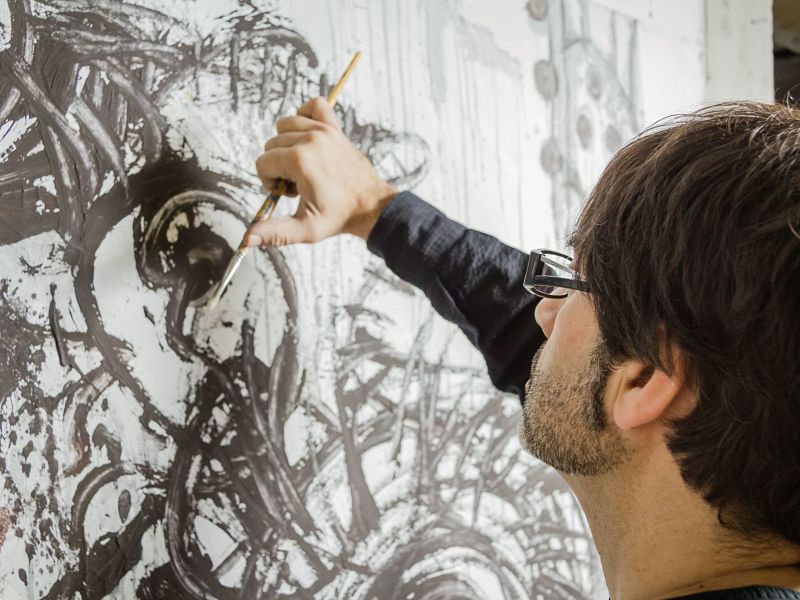
Art has always been understood as an element with a multitude of functions which are usually compatible: decoration, image and glamour, investment, collecting…
In this post we will focus on the main reasons why it is advisable to invest in art; and we do not do it from the perspective of doing it for a social good (supporting the art world and the take-off of certain artists so that they can devote themselves full time to artistic creation) but for a purely economic good.
Since the year 2000, investment in art has been growing year after year with growth rates of over 4%, mainly due to the investment appetite of Asian countries, China being today the main investing country both qualitatively and quantitatively.
This is mainly because China does not know where to invest all the currencies it receives for exports and has decided to implement an investment diversification policy in order to run fewer risks and become a world reference in the art market.
The Middle East market has been another market that has taken off especially in the last decade. Arab sheiks have been buying and investing in paintings, which are either displayed in their palaces or in museums created ad hoc to showcase these works of art. These Arab investors tend not to take risks with their investments.
To invest in art for them is to gain a reputation globally and differentiate themselves from other sheikhs who also have ample economic resources. Their bets range from classical and renaissance art to more contemporary but highly regarded artists such as Banksy, Jeff Koons, Damien Hirst, Kusama…
The rest of the international art market has hardly changed, with the Anglo-Saxon countries continuing to lead the way in terms of investment, with the United States and Great Britain standing out as the main markets for buying and selling art.
In the case of Spanish-speaking countries, Spain barely represents 1% of the global market and no Latin American country exceeds this figure.
These profitability reasons that have led new collectors to invest in art are equally applicable to institutions and individuals, although it is true that the latter can also be attributed a series of other advantages that would be difficult to apply to public institutions.
We have decided to divide the reasons for investing in art into three: investment reasons, more human and sentimental reasons and tax reasons.
Economic reasons for investing in art
Active shelter
Works of art are a refuge asset since they are one of the few material goods that do not lose value when changing hands (unlike real estate, vehicles…) and are one of the few goods that if you make a diversified and balanced investment ensure a return higher than the fixed income.

In fact, after the crisis, the average return on works of art has been higher than the debt of emerging countries and most classical commodities. It is true that it is the most classical and great master’s art that is a safe haven value, as contemporary art, being more recent, is less consolidated and more susceptible to price and valuation variations.
Diversifying risk
Investment in art is another option for investment funds, institutions and individuals. And when we talk about individuals, we do not only refer to large fortunes, we refer to ordinary people who have decided that they are not willing to take the risk of investing in the stock market or other volatile options, nor are they willing to lend money to banks in exchange for anything (which is what is happening today).
Art is a safe asset, which hardly loses value and which, over time, usually gains value, and very significant returns can even be achieved if the bet on new artists is finally successful.
Therefore, we recommend not only investing in established artists whose returns are usually safer but lower (and prices are usually prohibitive), but above all to make a mix and invest especially in young artists that inspire you and whose career may seem interesting (to do this, it is always advisable to seek advice from experts, an objective that we will try to achieve on our platform through this blog and through our team of experts with over 25 years of experience in the art market).
Long-term investment
Investment in art should always be considered in the medium and long term, since the revaluation of an artist and his or her work is usually carried out little by little as the artist becomes recognized nationally and internationally through the exhibition of his or her work in galleries, exhibitions and competitions.
That is why speculators do not see much attraction in this market and that is why artists’ prices do not fluctuate, which means a lot of peace of mind for those investors who bet on art in a calm way and with a long term vision.
Furthermore, it could be said in this case that investing in paintings is also a long term investment in your home, since the most common thing is to show the work acquired in your home so that not only your family and you can enjoy the art but also your friends and visitors can do so.
Average profitability
As we have seen in the graphs above, the average return on art is around 4% per year. Let us not forget that today, with interest rates practically negative, the return given by the different fixed-term financial products of banks and investment funds is practically zero, and that only a few portfolios with higher risk products manage to achieve this return.
Therefore, investing in works of art at least a percentage of your portfolio is a decision that is at least desirable, not only to diversify risk but also to achieve an almost assured return.
Emotional reasons for investing in art
Personal enjoyment
Art, unlike most investments, is a valued asset in itself, that is, its presence arouses emotions, debates, talks and endless sensations that can be different depending on the person who observes it.
The valuation of a work of art depends not only on fixed and known elements (such as the value of a flat, a share, a bond…) but also on the sensations transmitted to the buyer. A buyer can value the work of art in a very different way from others, taking into account only what inspires him/her both the work of art and the artist who has made it.
In fact, many times the investor decides not to resell the work because the pleasure he gets from contemplating the work or having it exhibited in his personal collection far exceeds the monetary value of the piece.
Belonging to the world of art
Many billionaires, through the purchase and investment in paintings and other artistic elements, try to incorporate themselves into the high social class, understanding as this not only the class that has large sums of money, but that class that has customs and behaviours of that social class.
Historically, the purchase of art belonged to a wealthy class, with a culture and education above the middle class. Today, thanks to public and private institutions, anyone can attend a multitude of cultural events and exhibitions, but in the past only those in the “upper echelons” were invited to such events.
